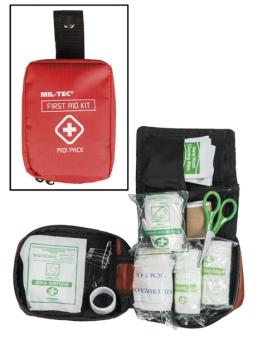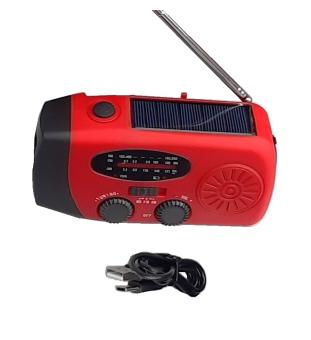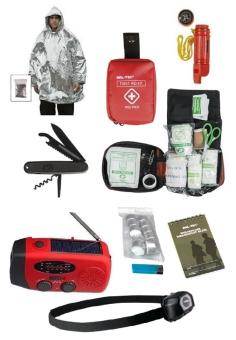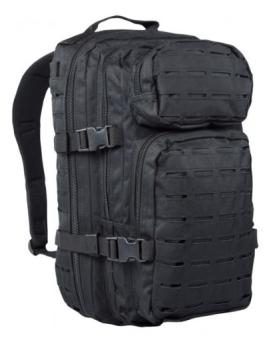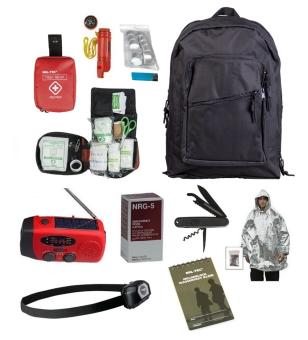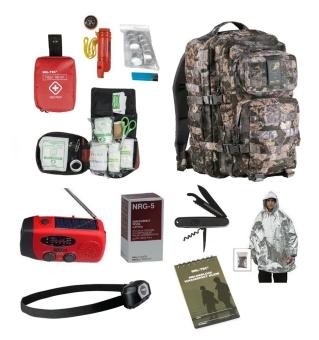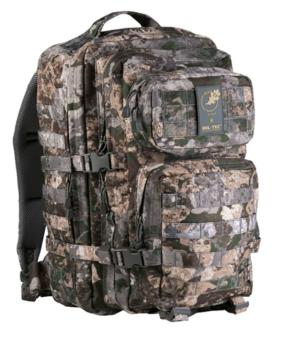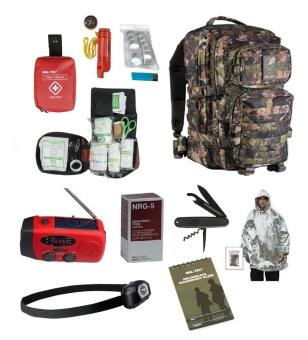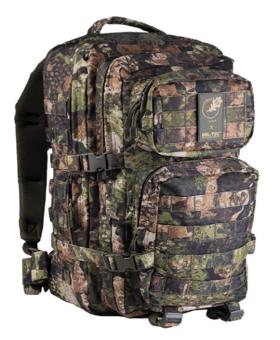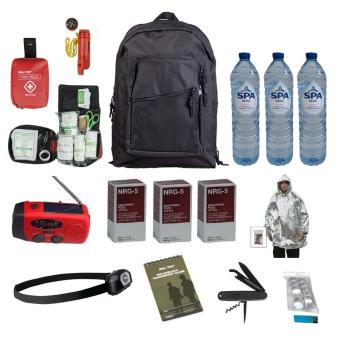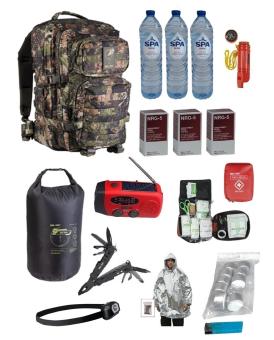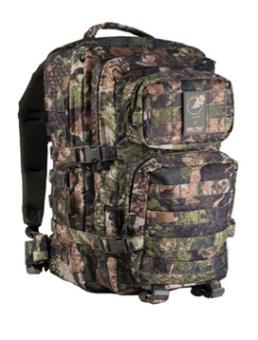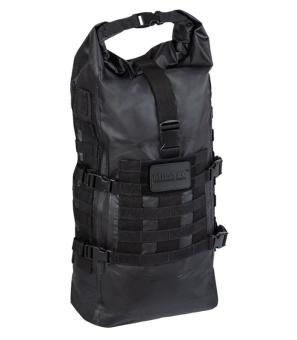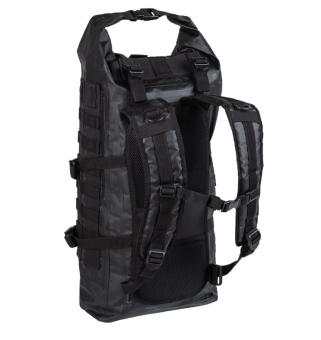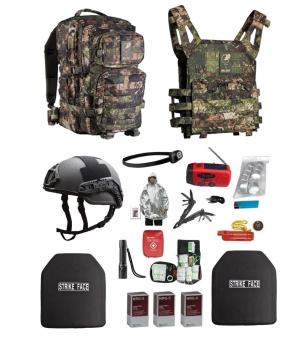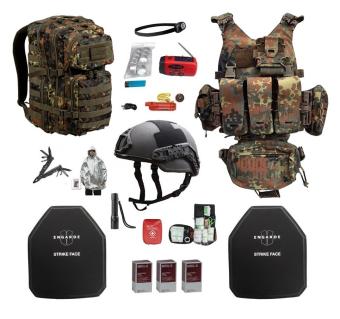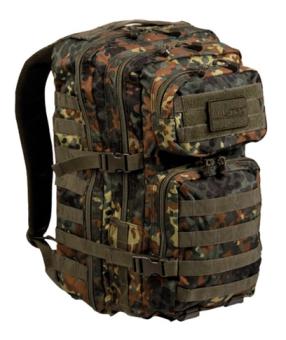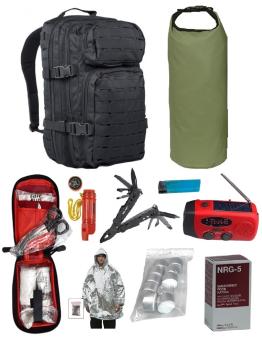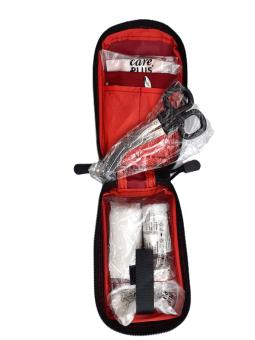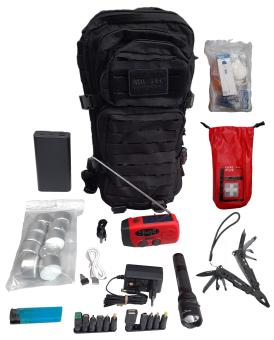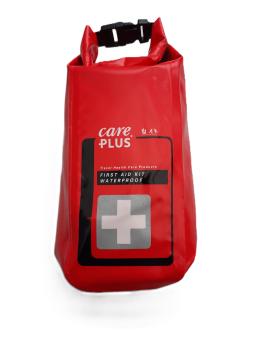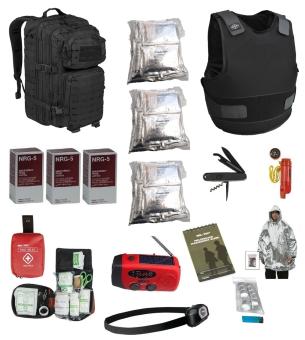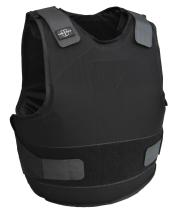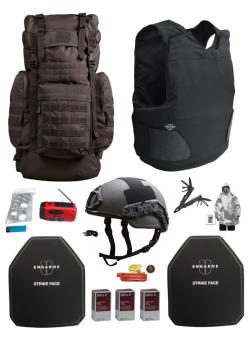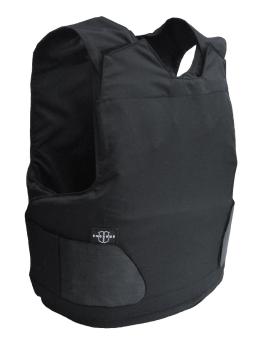Emergency Packages
Emergency pack buy list contents according to government advice emergency backpack self-assemble against emergency war or disaster resilience women family and seniors. To assemble your own emergency pack also check out:
Link to Emergency Kit Items
Link to Survival Prepper Shop
20 Items
FIRST AID
No guidelines have been given by the Belgian government as to what should be in a first aid kit and it also depends on the emergency situation you think you may encounter. A simple first aid kit with some wound plasters and bandages can help you for minor accidents. A larger general first aid kit can help you for serious injuries. There are also tactical first aid kits that are then more suitable for terror attacks in which a tourniquet and a pressure bandage should not be missing. Also consider the packaging of your first aid kit? Is it waterproof or do you keep it in a waterproof bag? Water and mud can render your first aid kit unusable!
Important documents
Copy of your ID card, driver's license, blood type, allergy card, copy of insurance documents,
Notebook (list important phone numbers)
A list of important phone number, 112 emergency service, family and friends, hospital, police, fire department, ... can also be waterproof.
GSM charger
A cell phone charger depends on the brand of phone you have. Either buy an extra GSM charger to match your smartphone, or get some kind of universal charger with different features (test these out too). Recall that some cars also have a USB charging point that you can plug your smartphone into but make sure you have the right cable that fits your smartphone.
External battery
The external battery depends on the items included in your emergency kit. If you have a radio or light that uses regular batteries then you need to provide spare batteries there. With a power bank you can charge your cell phone but also some lights and some emergency radios. The weight and price of a power bank depends on the strength in mAh. There are power banks of 10,000mAh, 20,000mAh and 30,000mAh. a cell phone battery has an output of 2,500 to 5,000mAh. The bigger your powerbank the longer you can get away with in an emergency.
Lighter
There are different types of lighters omm to light candles and fires. These range from the ordinary lighter to a storm lighter. Matches can also be used and there are wind and water resistant matches.
Tea lights
Tea lights are compact and come in different burn times. They can provide light and heat but should only be used in a well-ventilated room or outdoors. Tea lights and candles burn oxygen and give off smoke (carbon monoxide) which can cause suffocation in enclosed spaces.
Pocket knife
The Belgian government recommends a pocket knife. Some emergency kits include a combat dagger, the possession of which is prohibited in Belgium by the Belgian weapons law. A pocket knife in the form of a multi-tool or cutlery with a knife is more useful, falls under tools and is therefore not a violation of the Belgian weapons law. However, carrying it must be associated with the activity. (Disclaimer-we bear no responsibility for misinterpreting the Belgian weapons law)
Flashlight
There are no guidelines on what kind of flashlight you should put in your emergency kit. An Emergency Flashlight with dynamo or pinch-cat can be useful but these types of lights are generally quite weak. One can also opt for a powerful flashlight that can aim a strong beam or be visible by emergency services. Can be charged on batteries or USB connection.
Battery powered radio
The purpose is that you can follow the government's messaging even if the electricity network is down. There are different types of battery-powered radios. Ranging from small radios on standard batteries to special emergency radios. There are small compact emergency radios with many features and that can be charged in three ways; alternator, fixed battery and solar panel. There are also larger emergency radios that can be charged four ways; dynamo, fixed battery, solar panel and standard batteries.
Backpack
A backpack in the most practical to keep an emergency kit in. There are different models of backpacks with different contents. Especially consider whether you will also store clothes in your emergency pack because that takes up some space so you need a larger backpack. For those with back pain, an emergency pack can also be made in other bags or boxes, think of a waterproof barrel or box, travel case, sports bag, shopping trolley,...
Extra equipment for in vehicles
Water-resistant clothing
Dry water-resistant clothing can be a raincoat or poncho. This can also include a T-shirt, thick sweater, hoodie or a poncho liner that can then provide you with more warmth. Store these in a waterproof bag or waterproof backpack.
Blanket
A dry sturdy blanket to keep you warm when you have to wait in the car. This can also be combined with a poncho liner which is actually also a blanket with a hole in the middle. Waterproof storage!
Water and food
In the wagon, it is recommended to have some water and non-perishable food with you. This can be a few bottles of water, cereal bars or a can of food. Remember that 1 Liter of water also weighs 1 kilogram.
Road map
A road map can help you if you don't have a GPS or smartphone with you.
GPS device
A GPS device can replace a road map, but another option is to carry a spare phone that can have many other functions.
Unmentioned equipment that can be useful
Emergency whistle
A metal cup that is allowed on fire
Mini cooker lightweight burner with fuel
Compass
Emergency poncho
Poncho liner
Rain poncho
Paracord





